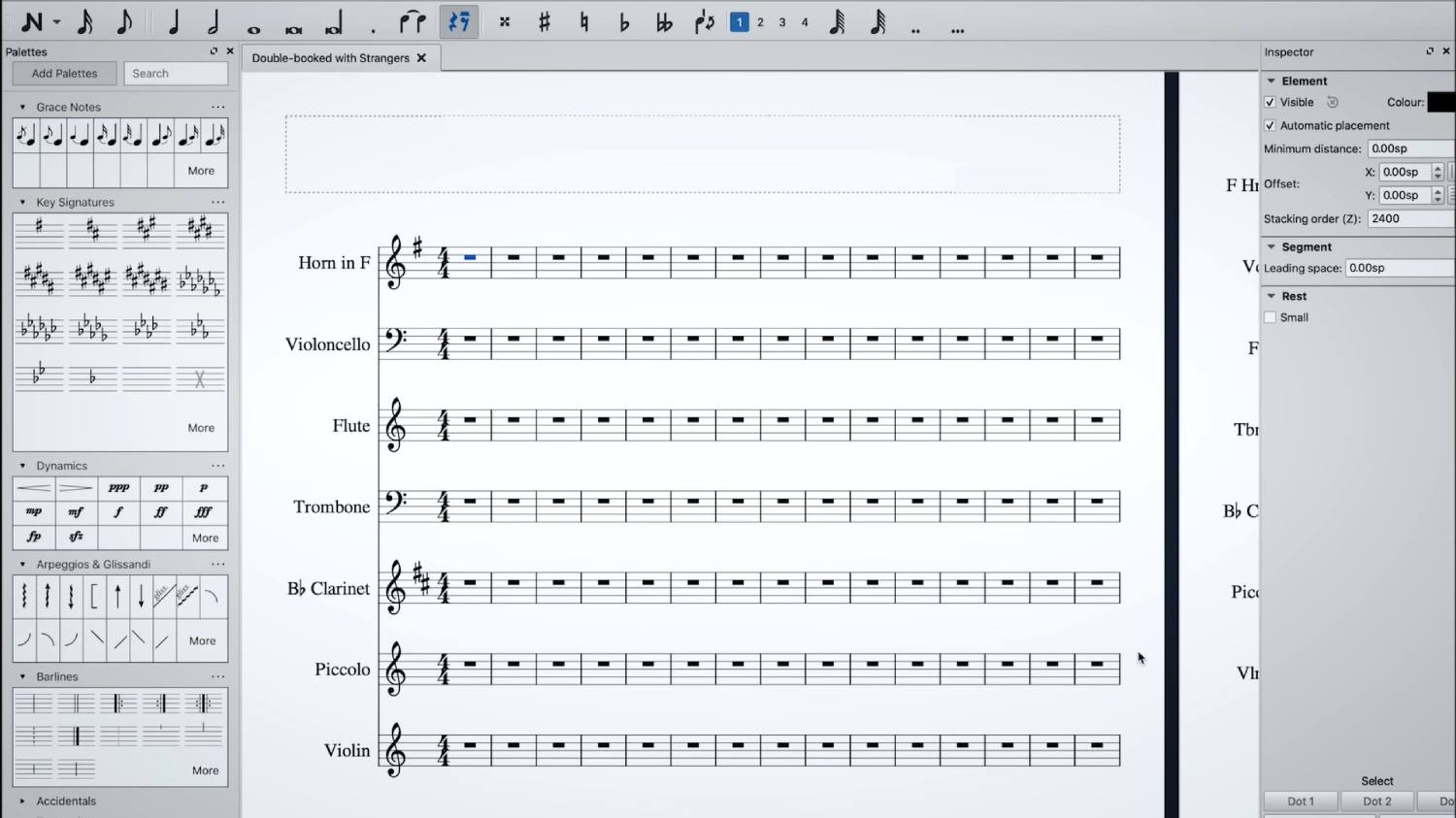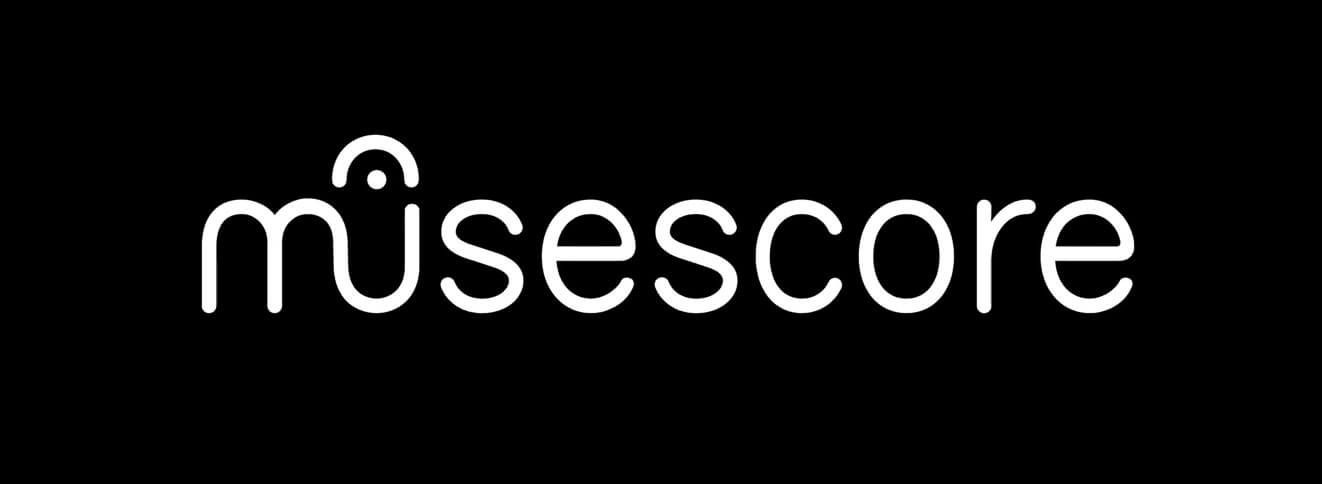
Type: Music Notation Software
Name: Muse Score
Creator: MuseScore
Version: 3.6.2
Available Versions: Stand-Alone Software
Pricing Options: Free
TL;DR
Overall I’m pretty impressed, this software offers an amazing variety of tools for music notation, composing and learning, and it offers all of this for free. As a producer who sometimes uses such tools when working with instrument players in a recording session, I think Muse Score is more than enough for simple music notation and communication.
The built in sounds and the mixing/editing options need some improvements, but for a free software that supports SoundFonts, it’s actually acceptable.
REVIEW
What is Musescore?
Musescore is an open-source software for music composition and notation. It allows musicians to produce their scores for performance, it can be used for self-study and instruction in the classroom. With MuseScore users can improve their music reading skills in the fastest and most professional way possible – actually writing music notation.
You can download it for free on the official website, it has versions for Mac OS X, Windows, and Linux. There are also apps for Android, IOS and KindleFire, but they have less features and are mostly meant for listening and reading.
Musescore supports many different instruments:
- Piano
- Guitar
- Bass
- Drums
- Violin
- Viola
- Cello
- Double Bass
- Flute
- Oboe
- Clarinet
- Bassoon
- French Horn
- Trumpet
- Trombone
- Tuba
- Timpani
- Harp
- Chimes
- Xylophone
- Brass Section
- Woodwind Section
- Brass Section
- And many more, see the impressive full list here: https://musescore.org/en/instruments
Muse Score features & sheet types overview
Muses core has many features that allow users to comfortably write their own music. The varied functionalities help with the process of composing music too and part writing. Its plugins makes music editing, composing and the playback experience more enjoyable. The plugins will save you time and effort by adding features that the original program doesn’t include. In addition, the website offers instruments in SoundFont format so users have more interesting sounds to work with while composing and notating their musical pieces.
It is also possible to import and to export files in different formats…
Muse Score native formats:
- MuseScore format (*.mscz)
- Uncompressed MuseScore format (*.mscx)
- MuseScore backup file (.*.mscz,) or (.*.mscx,)
Graphic files (export only)
- PDF (*.pdf)
- PNG (*.png)
- SVG (*.svg)
Audio files (export only)
- WAV audio (*.wav)
- MP3 (*.mp3)
- FLAC audio (*.flac)
- Ogg Vorbis (*.ogg)
Share with other music software
- MusicXML (*.musicxml, *.xml)
- Compressed MusicXML (*.mxl)
- MIDI (*.mid, .midi, .kar)
- MuseData (*.md) (import only)
- Capella (*.cap, *.capx) (import only)
- Bagpipe Music Writer (*.bww) (import only)
- BB (*.mgu, *.sgu) (import only)
- Overture (*.ove) (import only)
- Guitar Pro (various—import only)
- Power Tab Editor (*.ptb) (import only)
- Here is a link to the full list of file formats with more explanations on the official website: https://musescore.org/en/handbook/3/file-formats
The offered sheet layouts have many options and types, so you will find the right sheet for almost any situation, here are some of the sheet types in Muse Score and their highlights:
General
- Note entry via mouse, keyboard and MIDI
- Sharing music online with musescore.com
- Exporting scrolling sheet music videos with highlighted notes for YouTube
- Customizable interface
- Import & export files
- Edit notes & lyrics
- Assign instruments
- Change tempo
- Change duration
- Copy/Cut/Paste (notes & lyrics)
- Duplicate Measures
- Third party SFZ & SF2 support
- Basic abilities to edit and mix sounds
- Apply style rules to the whole score
- There are more, it’s impossible to list them all…
Piano layout:
- A number of note entry options
- Advanced transposition
- Notation for pedaling, fingering, cross-staff beaming and more
Guitar layout:
- Complete tablature, even historical lute tablature
- Import guitar pro files like GP3, GP4, GP5, GP6, GTP and GPX
- Fretboard diagrams with barre, fret position and any number of strings
- Custom strings tunings
- Bends, fingerings and other notations
Choir layout:
- Open and closed SATB scores
- Unmetered liturgical
- Lyrics
- Voice leading checker plugin
- Ability to separate voices to make learning individual lines easier
- Figured bass
- Band layout:
- Templates for fast start
- Custom linked parts
- Full band sounds
Orchestra layout:
- Linked parts
- Powerful style controls
- One click transposition
- Templates to save you time
- Full orchestral sounds
- Mixing and panning for individual parts
Marching ensembles layout:
- Collection of templates
- “Realistic” percussion playback with the free MuseScore extension
- Pictograms for clearer communication
- Trigger sample playback
Jazz layout:
- Intelligent chord symbols
- Easy slashes
- Advanced transposition
- Linked parts
- Ready made templates to start with
- Real book font style
The experience of using MusicScore – Pros & Cons
The MuseScore experience can be classified in three categories: beginner, intermediate and expert.
Newcomers to the software may take a while to get acquainted with the program’s capabilities. However, once they do, they will find that MuseScore has many features that make it easier to read and write their pieces.
Intermediate musicians will find the tool useful (especially if they’re on a budget). It comes with a nicely built score editor and instruments that can be added into the score to create the desired melodies, harmonies, rhythms, and accompaniments.
Experts will want a better sound quality than what the built-in instruments offer, but with the added support for 3rd party SFZ & SF2 files, Musescore offers a solution. The editing & mixing options don’t offer the professional experience of Notion 6 / Sibelius / Finale, but at a price of 0$, that’s quite understandable.
The community is not huge. Some feel it is a problem, but as a musician who has the goal of writing music, I don’t really see it as an issue.
One thing that bothered me was reading in forums about the bugs users are experiencing. Especially about the software crashing, which can be a bit of a problem if you don’t save your work, and even more problematic if someone paid for your efforts and you have to re-write everything.
Summary
Overall I’m pretty impressed, this software offers an amazing variety of tools for music notation, composing and learning, and it offers all of this for free. As a producer who sometimes uses such tools when working with instrument players in a recording session, I think Muse Score is more than enough for simple music notation and communication.
I would avoid relying on MuseScore’s abilities to mix music professionally. I would prefer a professional studio to do it the traditional way, send all the individual dry tracks in WAV file format and a reference track to direct the mixing engineer.
When I worked with the software, I didn’t experience crashes, it was the 3.6.2 version, but as I read on Muse Score forums, some people experience crashes and it’s not a small problem, especially with important projects or live recording situations. The FAQ page on MuseScore’s website offers a fix, so you can try it if you find your software crashing.

